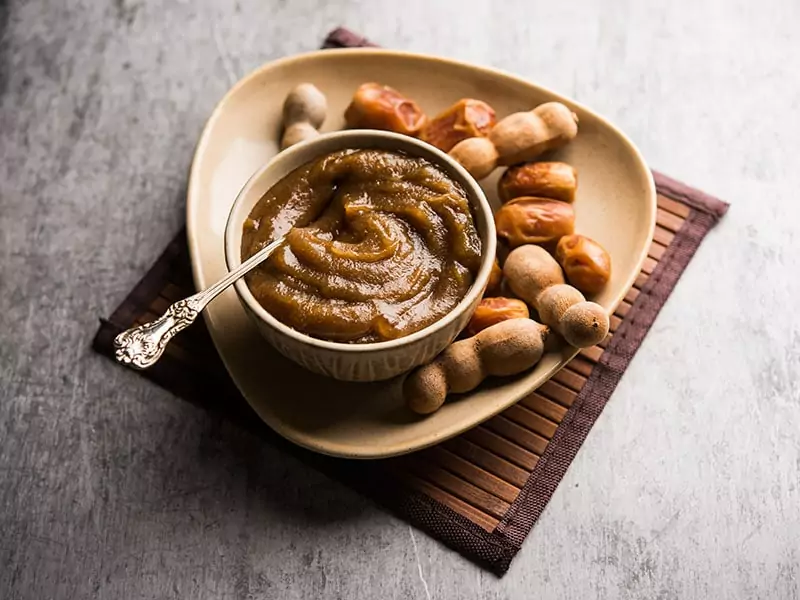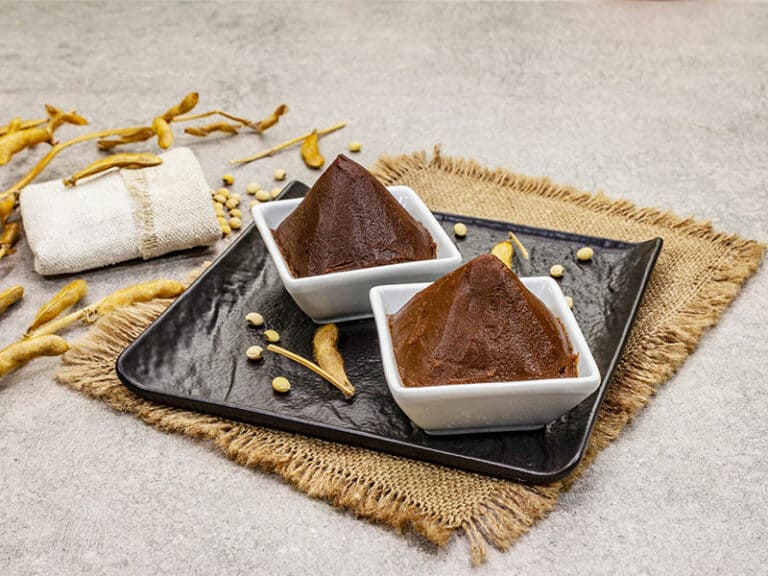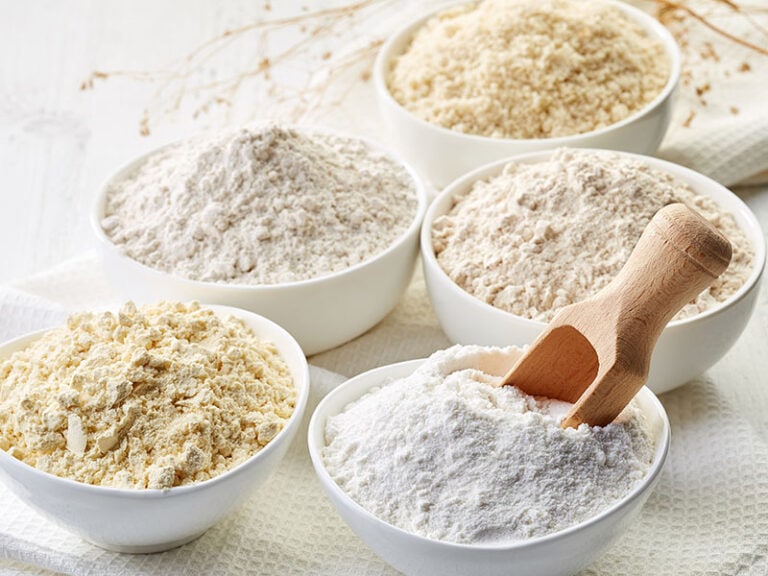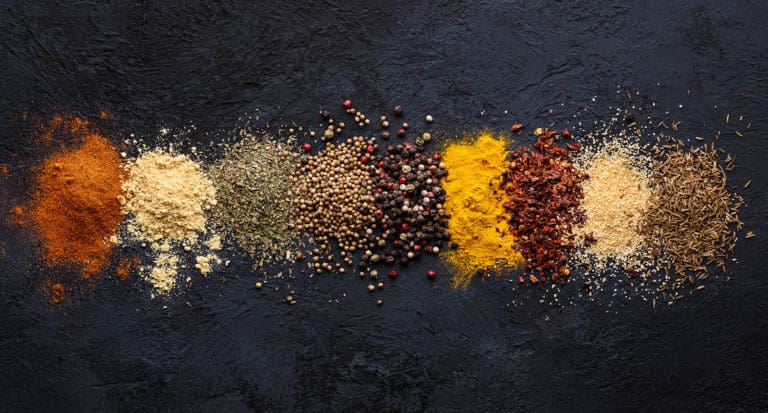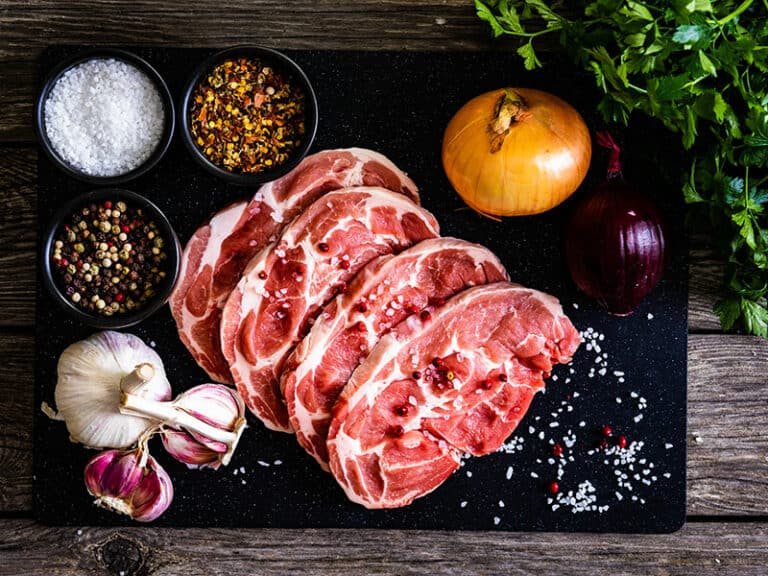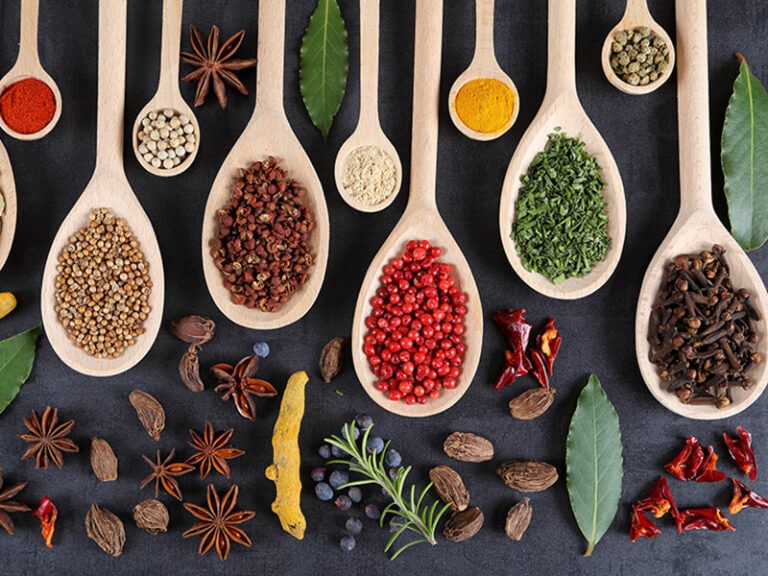Have you ever thought of what tamarind paste substitutes are when you cannot find tamarind paste in your local markets? There are various delicious recipes where tamarind paste is a star. And I know how frustrating it is if you do not have them.
Indeed, finding them in Walmart or any supermarket is pretty challenging, but let me help you with these alternative ideas for tamarind paste. So keep rolling down the page if you want your dishes to have a full or sweet-and-sour flavor.
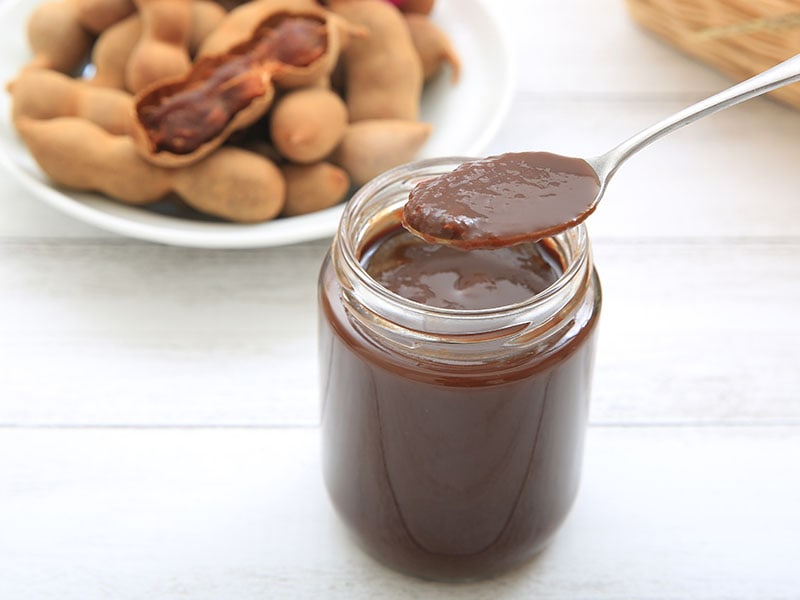
Top-saved Tamarind Paste Substitutes From Familiar Ingredients
Here are the top 12 substitutions for tamarind paste that you can easily buy or make at home. However, some of them cannot taste the same as tamarind paste, but they still work fine in a pinch.
- Worcestershire Sauce
- Pomegranate Molasses
- Lime Juice and Brown Sugar
- Dried Fruit and Lemon Juice
- Mango Chutney
- Rice Vinegar/White Wine Vinegar/Apple Cider
- Citrus Marmalade
- Amchur Powder
- Dried Tamarind Pulp
- Kokum
- Kachri Powder
- Vinegar
The Emergence Of Tamarind Paste To Culinary World
The versatility of tamarind paste in cooking is undoubted. But first, let me briefly introduce how tamarind paste is made and other interesting information about using them.
Obviously, tamarind paste is made from the tamarind fruits that bear on the tree. The scientific name of tamarind is Tamarindus indica, with origin from Africa (1).
They are cultivated well in tropical and subtropical countries. The tamarind fruit has dark brown or reddish-brown color pods with a sticky pulp and various seeds inside.
Therefore, before making tamarind paste, the seeds must be removed. Tamarind paste has a sweet and sour flavor primarily used in many savory dishes, particularly in Asia and Mexican cuisines. Sometimes they can be used to make candy as well.
Moreover, tamarind paste also has a hint of citrusy, and some also have a spicy flavor as they contain chili flakes or pulp. However, the basic taste of tamarind paste is still sweet and tart.
Tamarind Paste Substitutes Ratio Chart
Don’t jump into the details of tamarind substitutes without taking a quick look at their ratio. Besides following this chart, you should taste your dishes regularly to ensure the flavor meets your senses.
| Tamarind Paste Substitution | Substitution Ratio |
| Worcestershire Sauce | Mix Worcestershire sauce with other ingredients in a ratio of: 3 teaspoons of Worcestershire sauce 2 teaspoons of water 3 teaspoons of lemon juice 2 teaspoons of brown sugar and ½ cup of tomato paste |
| Pomegranate Molasses | 1 teaspoon of tamarind paste = 1 teaspoon of pomegranate molasses (1:1 ratio) |
| Lime Juice and Brown Sugar | 1 teaspoon of the mixture of tamarind paste = 1 teaspoon of lime juice and brown sugar (1:1 ratio) |
| Dried Fruit and Lemon Juice | 1 teaspoon of tamarind paste = 1 teaspoon of a mixture of dried fruit with lemon juice (1:1 ratio) |
| Mango Chutney | 1 teaspoon of tamarind paste = 1 teaspoon of mango chutney (1:1 ratio) |
| Rice Vinegar/ White Wine Vinegar/ Apple Cider | Mix Rice vinegar/ White wine vinegar/ Apple cider with brown sugar first 1 teaspoon of the mixture of tamarind paste = 1 teaspoon of a mixture of these 3 and brown sugar (1:1 ratio) |
| Citrus Marmalade | 1 teaspoon of tamarind paste = 1 teaspoon of citrus marmalade (1:1 ratio) |
| Amchur Powder | 1 teaspoon of tamarind paste = 1 teaspoon of amchur paste (1:1 ratio) |
| Dried Tamarind Pulp | Soak 2 tablespoons of tamarind pulp to 1/2 cup of warm water to create a paste-like texture |
| Kokum | Try with small quantity and taste until as desired |
| Kachri Powder | Try with small quantity and taste until as desired |
| Vinegar | Add brown sugar and/or ground dates first, then try with small quantity and taste until as desired |
What Ingredients Can I Use To Substitute Tamarind Paste?
The main section of this post is about the substitutions of tamarind paste as it is not very easy to spot them in the supermarket sometimes. With the tangy and sour flavor from tamarind, tamarind paste can be replaced by 12 alternatives such as:
1. Worcestershire Sauce
Worcestershire sauce can be an excellent ingredient to substitute tamarind paste as the ingredients of Worcestershire sauce include tamarind extract.
But what is Worcestershire sauce? It is a liquid-based fermented condiment that was invented in the 19th century. This sauce has a complex taste with sweet, sour, and spicy flavors. And the sourness of this sauce is from tamarind and vinegar.
However, making Worcestershire sauce become a good substitution for tamarind paste requires a few more ingredients. After examining to see whether Worcestershire sauce may spoil, you need to follow the following recipe for the closet flavor as tamarind paste:
- 3 teaspoons of Worcestershire sauce
- 2 teaspoons of water
- 3 teaspoons of lemon juice
- 2 teaspoons of brown sugar
- and ½ cup of tomato paste
Lemon juice should be from a fresh lemon. If you do not have lemon juice, lime juice or apple cider are acceptable.
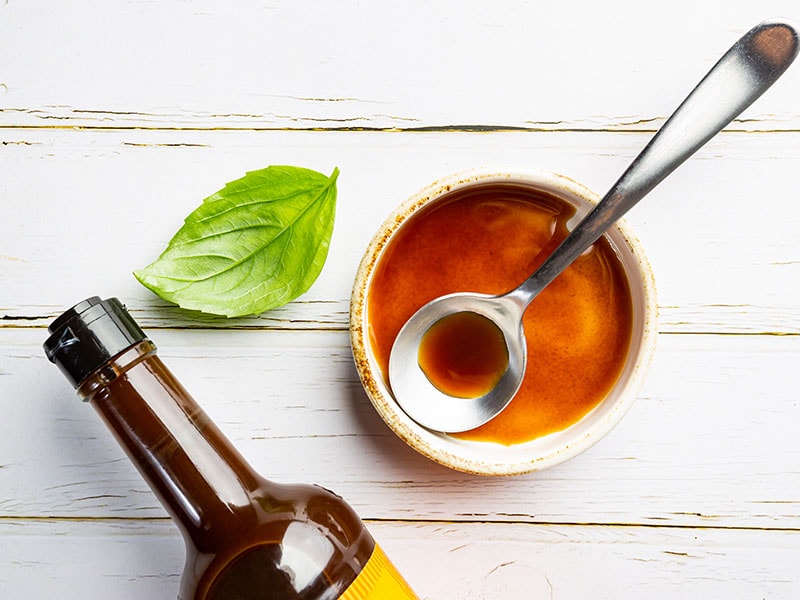
2. Pomegranate Molasses
If you’ve ever prepared dishes featuring pomegranate, there’s a high chance that you’ve also stumbled across pomegranate molasses as well. In any case, this ruby-colored syrup is a prominent pomegranate recipe, and it’s featured in several other dishes as well.
Pomegranate molasses has a strong sweet-and-tart flavor. And with the sourness that they have and a thick texture like tamarind paste, you can directly use them in place of tamarind paste with a ratio of 1:1.
For example, 1 teaspoon of pomegranate molasses equals 1 teaspoon of tamarind paste.
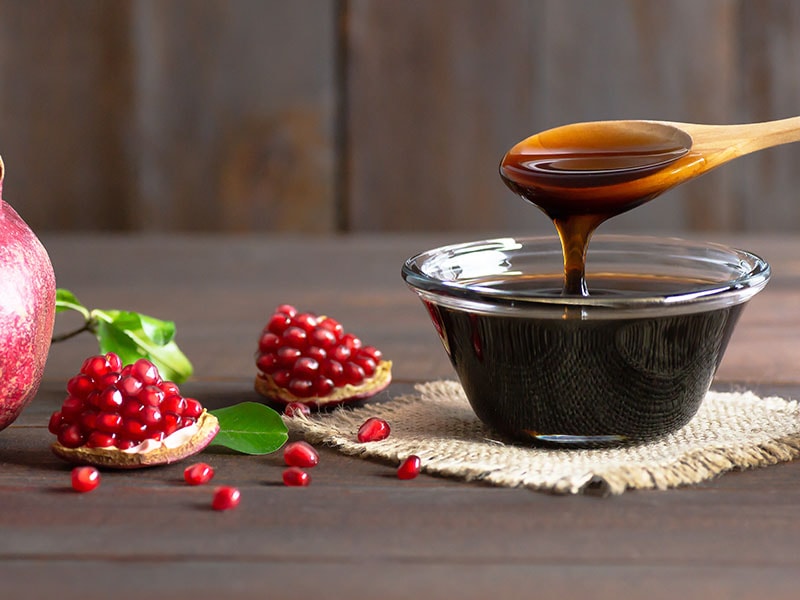
3. Lime Juice and Brown Sugar
Speaking of the sour flavor, I cannot fail to mention lime juice.ut as lime juice is too sour to replace tamarind paste, you should add some brown sugar into the lime juice before using them to substitute tamarind paste.
Can you use lemon instead of lime, especially when you also don’t have limes at your disposal? While there’s no denying that there are many aspects that set lemon and lime apart (such as how lime is slightly more bitter than lemon), when you’re in a bind, it’s an acceptable alternative.
Though the balance of sweet and sour flavor from lime juice and sugar cannot taste exactly the same as tamarind paste, it can work well in many dishes in a pinch with a ratio of 1:1 as well.
So, 1 teaspoon of the mixture of lime juice and brown sugar can substitute for 1 teaspoon of tamarind paste.
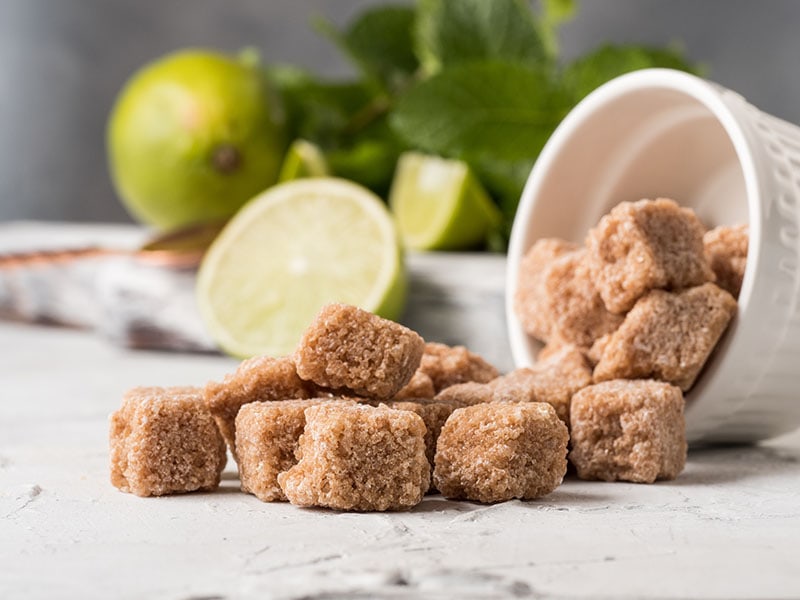
4. Dried Fruit and Lemon Juice
This combination might sound funny to you for replacing tamarind paste, but somehow they can manage the taste that you would not even recognize the difference.
First, you should use the same quantities of chopped prunes, dates, and apricots, then soak them in lemon juice and water for 20 to 30 minutes for softening. Then you will strain the liquid and blend the fruit to make the substitution for the paste.
Use the ratio 1:1 to replace tamarind paste; for instance, 1 teaspoon of a mixture of dried fruit with lemon juice equals 1 teaspoon of tamarind paste.
Whenever I suggest using this substitute, the most common question I’m asked is “Can I use lemon extract instead?” Considering the many aspects that differentiate lemon juice and lemon extract, I don’t think it’s a good idea. It’s best to stick to lemon juice in this case.
Pro tip: If you do not have prunes, dates, and apricots, adding raisins to lemon juice is fine.
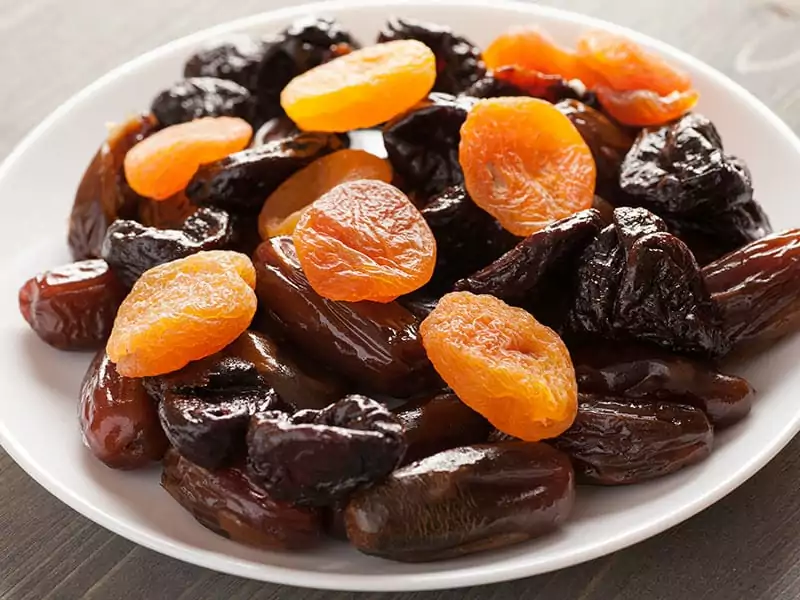
5. Mango Chutney
There are more uses to mango chutney other than as sandwich spreads, meat glaze, or salad dressing for a hearty breakfast while on a picnic trip. With its thick consistency and sweet/tart flavor, chutney mango is quite similar to tamarind paste, making it a suitable alternative.
You can make mango chutney at home or buy them in the store. However, make sure you buy a high-quality mango chutney for the best flavor and texture to replace tamarind paste.
But remember, some brands of mango chutney might have sweeter flavors, so if you find your mango chutney is too sweet, you can add some lemon or citrus juice to add the sour flavor.
Some mango chutneys also have many fruit pieces, so you should use a blender or a food processor to grind them before adding them to your dishes. With the substitution ratio of 1:1, 1 teaspoon of mango chutney is totally acceptable for 1 teaspoon of tamarind paste.
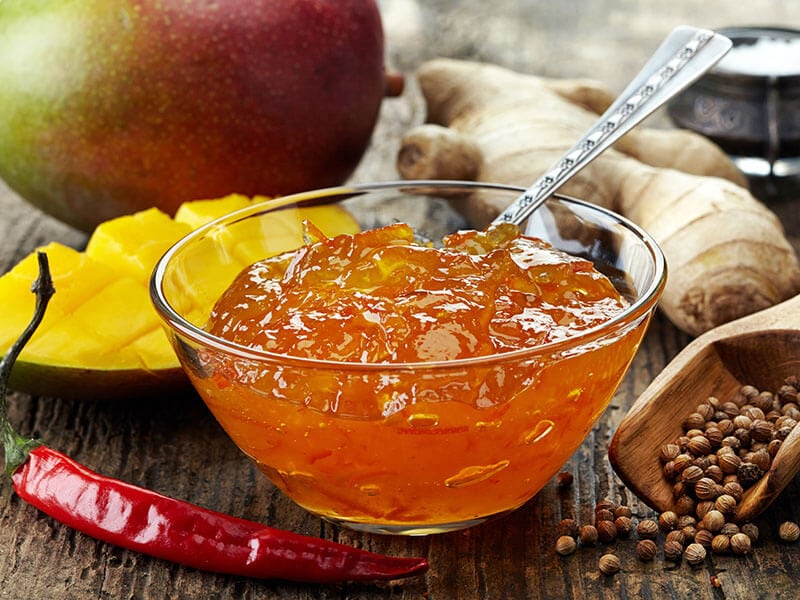
6. Rice Vinegar, White Wine Vinegar, or Apple Cider
Rice vinegar, white wine vinegar, or apple cider also works great to replace tamarind paste. By adding brown sugar, this mixture can bring a sour and sweet flavor similar to tamarind paste.
However, avoid using cheap or low-quality rice vinegar, white wine vinegar, or apple cider as their flavor might be too harsh and might overpower the other tastes of your dish.
Similarly, use the same amount of these 3 with brown sugar to substitute tamarind paste.
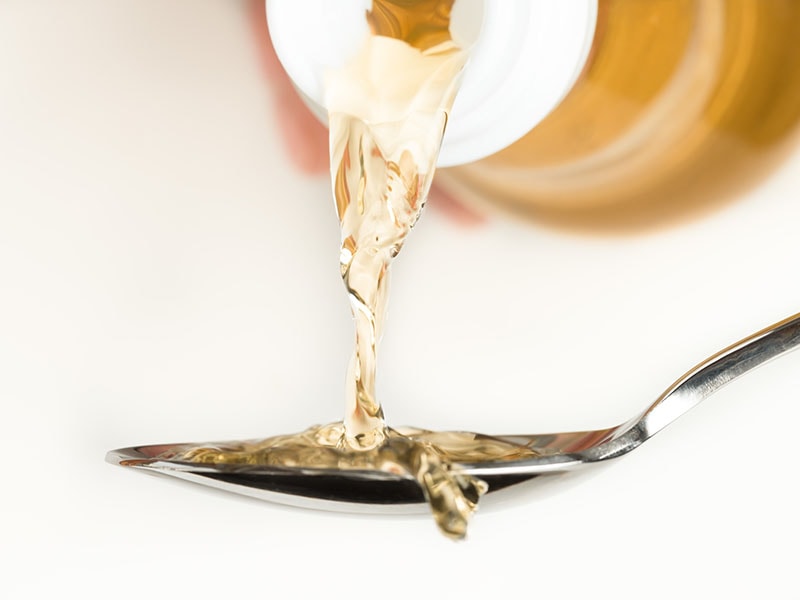
7. Citrus Marmalade
Don’t think that citrus marmalade is only reserved for fancy desserts that are often served during the winter, especially in the holiday season. While it’s true that marmalade’s taste is not really close to tamarind paste, its bitter-and-sweet hint can still enhance your dish’s taste.
Also, their astringent texture makes them look like tamarind paste. For substituting, use the same amount of citrus marmalade for tamarind paste; for example, 1 teaspoon of citrus marmalade equals 1 teaspoon of tamarind paste.
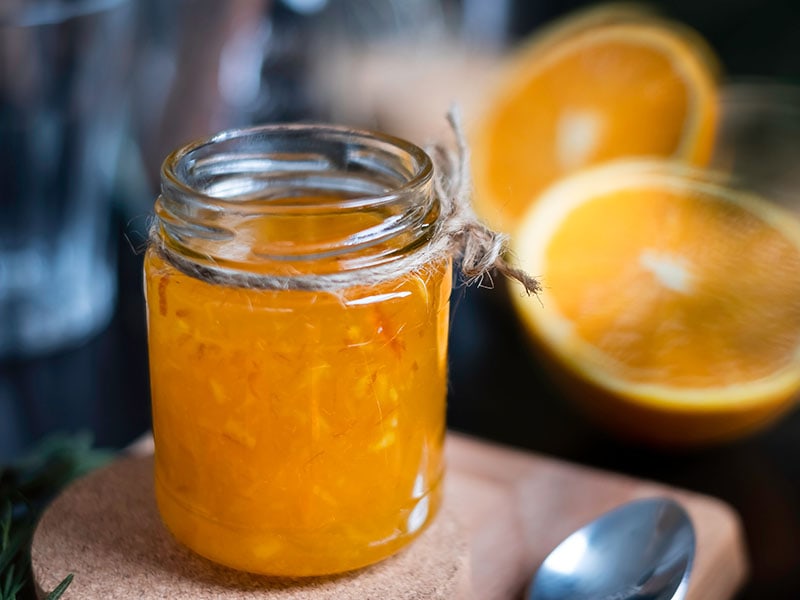
8. Amchur Powder
What is amchur powder, by the way? Amchur powder is a dry mango powder that is very popular in India. And the mangoes that they use to produce this powder are unripe ones.
Therefore, they will have a sour flavor as tamarind. If you want a consistent texture like tamarind paste, use the same level of water and powder, then mix them well before adding this mixture to your food.
And the ratio of 1:1 is also applied for this case. 1 teaspoon of the amchur paste can replace 1 teaspoon of the tamarind paste.
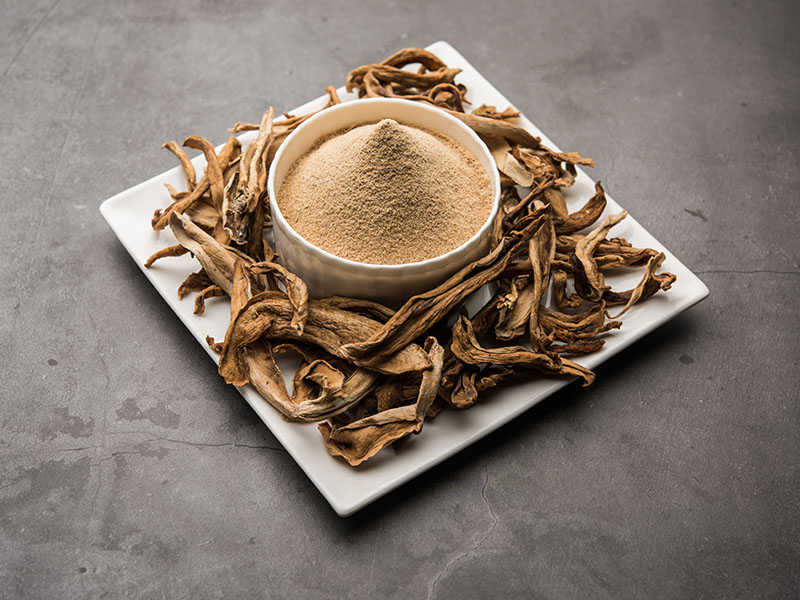
9. Dried Tamarind Pulp
If you can find tamarind pulp instead of tamarind paste, go for it. Do not forget to remove the seeds and separate pulp before making the paste. If possible, try to find some fresh pulp for better paste quality.
Add 2 tablespoons of tamarind pulp to 1/2 cup of warm water and let them soak until softened. When you find the pulp blend well in water, now you can use them as a paste.
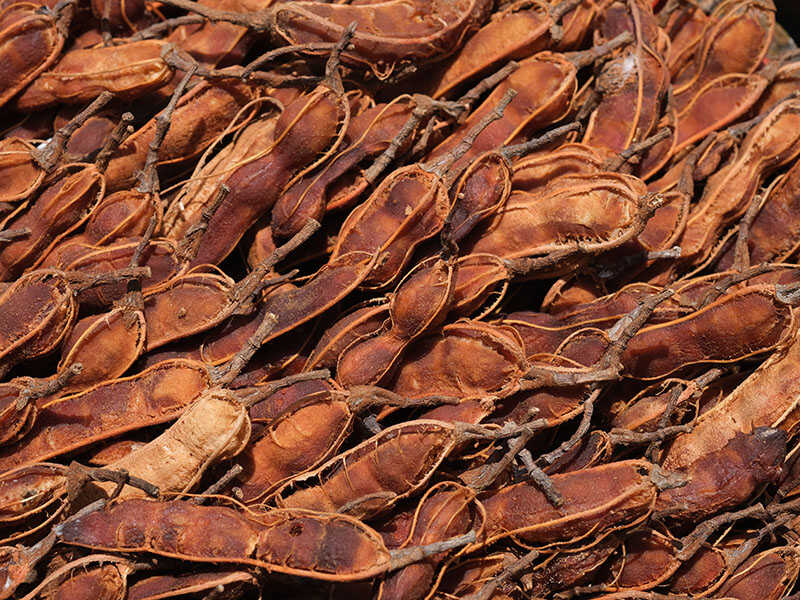
10. Kokum
If you live in India, you can try this substitution. Kokum is an Indian fruit that can be used in cooking as a souring ingredient. And with its sourness, kokum might be an alternative for tamarind paste.
To substitute for tamarind paste, you should soak kokum in water before adding them to your dish. Remember to slowly pour this mixture with a small quantity and taste until you are delighted with the final flavor of the dish.
11. Kachri Powder
Here is another Indian-originated ingredient that can work in place of tamarind paste. It is kachri powder. Kachri powder is made from kachri, a vegetable grown in many Indian areas.
And thanks to their tangy flavor, kachri powder can be considered to become a tamarind paste substitution. But as they can only work in a pinch, so you’d better taste your dish while you add kachri powder to it.
12. Vinegar
It could be the last option because the pungent flavor of vinegar might overwhelm your dish.
The above vinegar would be better to substitute tamarind paste, but if you only have basic vinegar, you can give them a try. You can add ground dates to increase the sweet flavor and the consistency texture as well.

How To Make Tamarind Paste At Home?
Alright. If you can buy some tamarind fruit, why don’t you try to make tamarind paste at home? Do you know what is better? You can keep your paste for several months in the fridge. You will need some tamarind fruit pulps, water, and some simple kitchen tools.
Make sure you buy unripe tamarind, so they still have sourness with a little bit of sweetness. And here are some simple steps to make them.
Step 1: Remove the pods. Remember that you only use soft flesh to make tamarind paste. In the meantime, you can boil water.
Step 2: Use a bowl to pour the boiling water over the tamarind, wrap the bowl with the wrapper and soak the tamarind for up to 45 minutes.
You also need to stir the mixture of water and tamarind often. And when you find the water has cooled down, use your hands to rub and remove the seed. The mixture now will have a thick and pulpy texture.
Step 3: Place a strainer on a big bowl to filter the mixture so you can separate the fibrous parts and the seeds. Use a large spoon to press on the mixture to get more liquid. The final paste will be thick and clean.
Making tamarind paste is hard? No, it is easy-peasy, and cost-efficient.
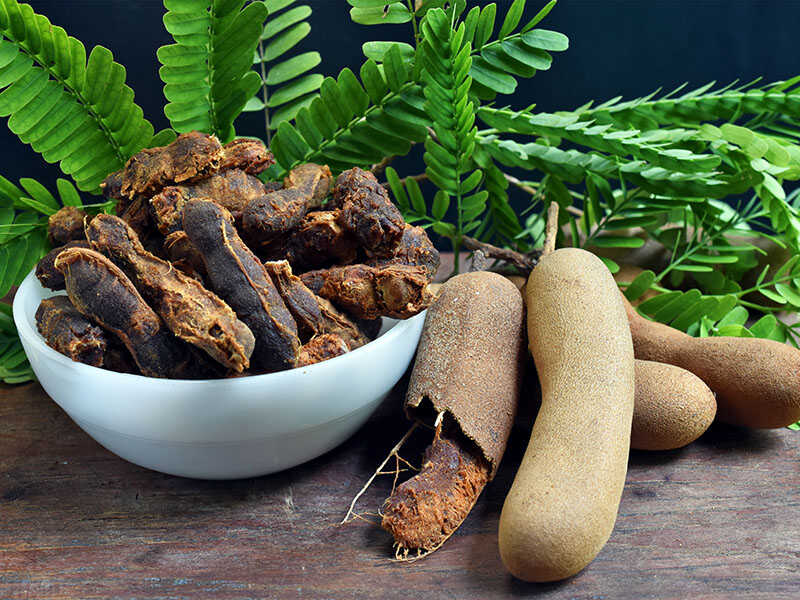
Storing Tips For Tamarind Paste
Use jars or food containers to store tamarind paste. You should place them in a cool and dry place; that’s why it is highly recommended to keep them in the refrigerator for the best flavor and freshness.
You can add some water to dilute your tamarind paste before using them, as they could be thickening. With proper care and sealed, your paste is safe to use for months.
Some Amazing Cooking Recipes With Tamarind Paste Or Its Substitutes
Here are some spectacular ideas to turn your tamarind paste into several tasty dishes that you just want to make over and over again.
Tamarind Chicken Stir-fry With Rice
If you want to eat something that makes you full and satisfied, this tamarind chicken stir-fry and rice is a perfect choice.
This recipe is also for the starter that will not take too much time and effort. With the combination of tamarind parse, soy sauce, honey, and pepper, your chicken is full of flavors that go well with rice.
Tamarind Prawn Curry
Tamarind paste is very delicious when mixed with seafood, such as prawns. This recipe is nutritious, low in fat, and easy to prepare. Doesn’t it sound delicious?
To make the prawn taste good, you’ll need other flavors like chile, ginger, and garlic in addition to the tamarind paste. For the most delightful dish, serve the curry along with rice and chopped herbs on top.
Delicious tamarind prawn curry is an easy dish to cook, so let’s make them this weekend.
Tofu Pad Thai
I bet many of you know this dish. Yes, pad thai is one of the most famous dishes in Thailand, and they are super yummy.
You might have tried regular pad thai with prawn, chicken, or pork. But this recipe is for your vegan choice with tofu. And, of course, the sauce that is made of tamarind paste, coconut aminos, chili, and other spices will bring tons of flavors to your pad thai dish.
Your vegan pad thai is still tasty with tamarind paste and other sauces.
Tom Yum
Here is another Thailand delicacy that I must present in this post. It is tom yum, sweet and sour soup with a touch of tamarind paste.
You might need a bottle of fish sauce to make this dish more authentic. Moreover, if you do not have tamarind paste, you can use lemon juice, but remember to recheck the substitution ratio and taste it to make sure the final taste is good.
Some Others Ways to Cook With Tamarind Paste
Here are other ultimate ways to bring the best out of tamarind paste into your recipes as below:
- You can add tamarind paste into sweet side dishes (e.g., chutney).
- Making meat marinades from tamarind paste is a perfect way to tender the meat.
- Tamarind paste is an ideal ingredient to make sauces by combining with other components (e.g., sugar, vinegar, or fish sauce).
- By adding sugar to the paste, you can make the dessert from this mixture.
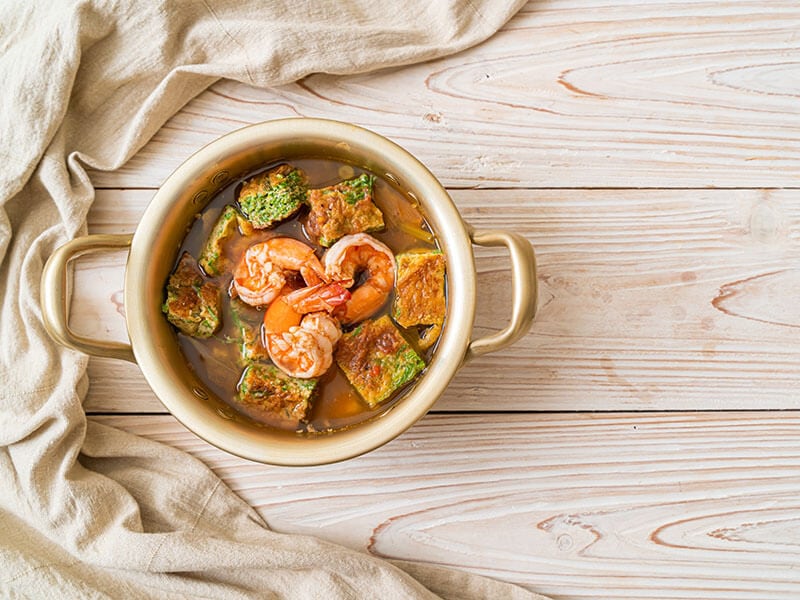
Health Benefits Of Tamarind
There are several health benefits of tamarind. Below information is some highlight of what advantages that you could have from consuming tamarind.
- Reduce inflammation: Tamarind is high in antioxidants to improve your immune function. Plus, antioxidants can reduce inflammation of oxidative stress and delay the development of cancer cells.
- Good for your heart and blood: The polyphenol and flavonoid properties in tamarind can reduce bad cholesterol, resulting in better heart conditions. Moreover, it will help you regulate your blood pressure.
- Bring some benefits for your livers: The antioxidants found in tamarind, once again, act as an excellent remedy to prevent liver damage.
- A great source of antimicrobial properties: And these compounds can prevent many potential bacteria.
- Can improve blood sugar: Though people do not use tamarind seeds to make the paste, this seed extract can bring many benefits in anti-diabetic and control blood sugar (2).
Related Questions About Tamarind Paste
Do you have any concerns about tamarind paste at this point? If yes, I hope these questions and answers will help you get to know more about tamarind paste and how to use them right.
No Tamarind Paste? No Big Deal
The above information covers tamarind paste and shows you how to substitute them with other cooking components if you cannot buy fresh tamarind.
These 12 alternatives may help you enjoy your dishes with sweet and sour flavors. Though some do not have the same flavor as tamarind paste, they still work fine in a pinch.
Also, if you have other better replacements for tamarind paste, please feel free to share them with me. Or, if you already tried these substitutions, your feedback is welcomed. Thank you for your time.
Nutrition Facts
1 servings per container
- Amount Per ServingCalories120
- % Daily Value *
- Total Fat
0.3g
0%
- Saturated Fat 0.1g 0%
- Sodium 35mg 2%
- Potassium 321mg 10%
- Total Carbohydrate
31.3g
11%
- Dietary Fiber 2.6g 8%
- Sugars 28.7g
- Protein 1.4g 2%
- Calcium 58%
- Iron 1%
* The % Daily Value tells you how much a nutrient in a serving of food contributes to a daily diet. 2,000 calories a day is used for general nutrition advice.
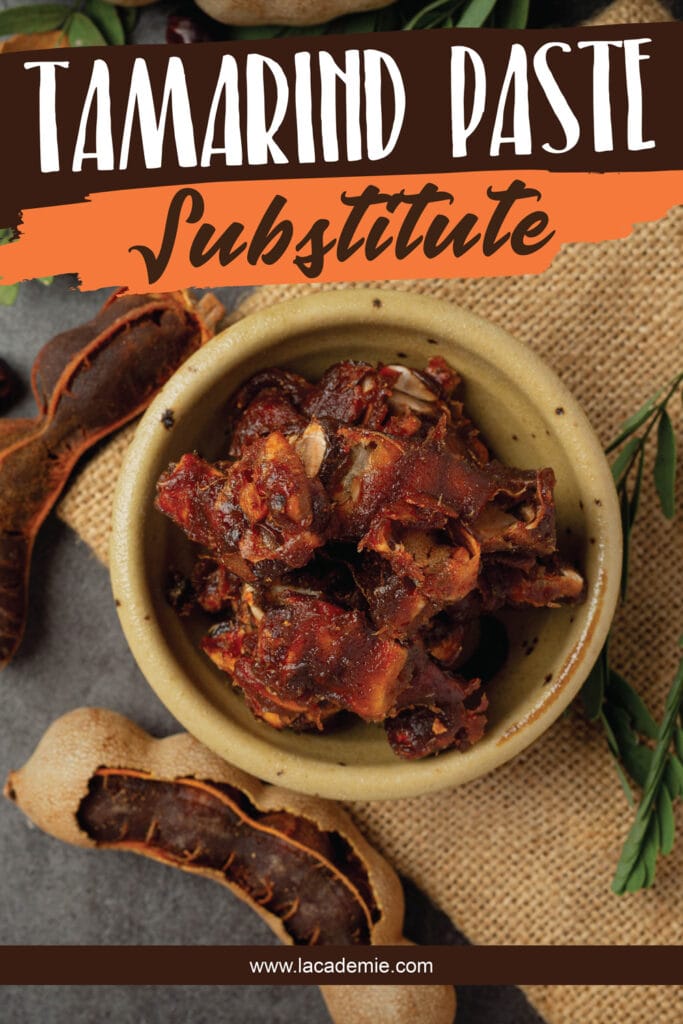
Reference List
- En.wikipedia.org. 2021. Tamarind – wikipedia. [Online]. Available at: <https://en.wikipedia.org/wiki/Tamarind>.
- Sushant, S., Srinivasan, B., and Akarte, A. (2021), ‘Anti-inflammatory Action of Tamarind Seeds Reduces Hyperglycemic Excursion By Repressing Pancreatic β-cell Damage and Normalizing SREBP-1c Concentration’, Pharmaceutical Biology, vol.51(3), pp.350-360. Available at <https://doi.org/10.3109/13880209.2012.729067>.

